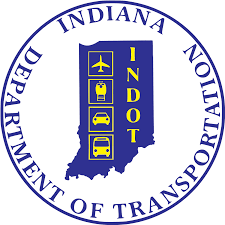
The project, located on US 421 between Greenflied/Templin Road to County Road 300 South, is intended to address driver and pedestrian mobility needs, and when the project is completed, INDOT anticipates that the project will include many roadway improvements in the area, including pavement rehabilitation, added auxiliary lanes, intersection improvements, pedestrian facilities and storm drainage enhancements. However, INDOT announced that before the visible work can be underway, the design team must deal with the unseen aspect of an intricate underground maze of infrastructure.
The underground network of infrastructure is a pivotal aspect of new development and improvement projects as the need for clean water, waste removal and telephone and internet service is a fundamental factor of daily life for the residents in the area. Before physical work can be planned and initiated, the team must address the underground pathways to ensure that the standing infrastructure does not receive damage or cause issues in the present or future following the project.
INDOT stated that most new and refurbished roadways sit atop a foundation that runs from five to 20 feet deep, which allows for the road to perform well into the future, but as the foundation reaches toward the maximum depth, the odds of the construction team discovering cable and phone lines or water, gas and sewer pipes increase. INDOT stated that the infrastructure must be located and identified as plans are constructed to maneuver around them for the safety of the workers as well as the residents.
The project is approximately a mile and a quarter lomg and 150 feet wide alongside the city of Carmel and the town of Zionsville in Boone County. Typically, the use of ground-penetrating radar, test holes and other tools allow for the design team to identify the underground infrastructures, and the design team for the project has reportedly found 20 different utilities within the footprint of the project, including fiber optic cables, telephone lines, gas lines and water and sewer pipes. INDOT reported that the assessment has only been half completed.
Following the detection of the various infrastructure, the design team is then tasked with determining whetehr the infrastructure runs horizontally or vertically, which further allows for the team to determine how the infrastructure may be avoided during the construction or whether the infrastructure must be relocated for the project to continue. Ownership of the infrastructure must also be determined to continue with the project.
If the team has determined the ownership and the need for the infrastructure to be relocated, the team must work with utility companies to weigh the relocation plans against considerations about planned upgrades and future service expansion. Only after the plans are finalized for relocation may the physically relocating work begin, and only after the relocation may the roadwork begin.
